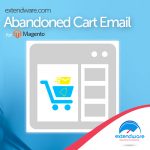SEO is the key to running a good online store. If you’re doing Magento search engine optimization yourself without issues, then you are in great shape! It can certainly be a challenge for those who have less SEO experience. Kind of like myself! When I first started my online clothing shop, I was struggling to get my store to a higher than 50 position. I was goof with blogs and keywords so I wasn’t sure why I wasn’t in a better spot! I then realized my low traffic and low rankings were due to issues in my Magento SEO settings. After identifying this, I took some action to fix these issues and I want to share them with you!
Default Settings
The main thing you need to do is go through all configuration points and change every single default setting. The default Magento installation is pretty useless when it comes to SEO. It has certain settings, but they are insufficient for proper search engine optimization and fighting competition.
You can’t leave the default settings as they are and you will still need to go through them and tune everything up before installing any third-party SEO extensions.
Changing URLs/Deleting Pages
If you change URLs or delete pages and don’t set up a proper redirect, it will cause more 404 mistakes on your website. Google says it’s okay to have some URLs returning 404 pages, but still they want you to fix them. Just go to System, then Configuration, then Catalog, and Create Permanent Redirect for old URLs. Its good to eliminate these as nothing scares a customer off more than a 404 message!
Image Optimization
Magento doesn’t change the name of the product image or add an alt tag so you will have to do this yourself if you want your images bring you passive traffic from search engines, and SEO friendly name tags. Try Extendware’s Image Optimization extension to optimize your images and reduce their size without sacrificing image quality!
Default Descriptions
If you go to System, then Configuration, Design, HTML Head and finally Default description and enter it, Magento will put this description to all pages without a custom description. Remember that each of your pages is considered to be unique, including meta tags.
Translated Page URL’S
If your product is site.com/product.html for the English language, you should have different URLs for the same product in other languages as well. I learned that you have to change it for each language your store is geared towards. Make sure to do it on all pages too not just home page, which means all product pages!
Rich Snippets
Rich Snippets are a great way to have more exposure and attention without necessarily being in top 3. Results in Google with rich snippets have higher CTR and more clicks. Implementing rich data is pretty easy and should be only be made once.
rel=”alternate” hreflang=”x”
rel=”alternate” connects pages with the same content, but in different languages so don’t ignore it! You might even want to use another tool – “x-default hreflang” for international landing pages. Make sure to link translated pages with each other. It is usually done through country flags or links with language names’.
Layered Navigation/SEO Optimization
 Leaving Magento layered navigation as the default or third-party, without tuning SEO settings is an important mistake which may lead to hundreds of pages with messy URLs and duplicate content. Check out Extendware’s Layered Navigation extension to increase sales by making your catalog more filterable, aesthetically appealing, and faster for your customers to find the products they want!
Leaving Magento layered navigation as the default or third-party, without tuning SEO settings is an important mistake which may lead to hundreds of pages with messy URLs and duplicate content. Check out Extendware’s Layered Navigation extension to increase sales by making your catalog more filterable, aesthetically appealing, and faster for your customers to find the products they want!
XML sitemap
To make sure all of your store pages are indexed and re indexed properly and fast, you will need to upgrade your XML sitemap. Make sure to check the content before submitting it to Google Webmaster Tools. Default Magento XML sitemap only includes products and category pages and doesn’t contain images.
Duplicate Issues
Ok so Magento is a culprit of duplicate content, which Google hates! Product Sorting can increase the effectiveness of your online product catalog and can increase your conversion rates. Sort products on your sales page by Best Sellers, Top Performers, Most Viewed, Number of Reviews, and more. Easily cascade your sorting options – such as always showing in stock items first. For more info check out Extendware’s Product Sorting extension.
Load Speed
 Load speed on any website is an official Google ranking factor. An e-commerce store’s speed influences bounce rate and customer’s likeliness to return. Magento itself is very slow in terns of site speed and SEO. So it is recommended to use a cache service such as Extendware’s Full Page Cache extension. This will reduce your Magento store’s First Byte Time, increase your web server request rate, reduce database load, and make your store much more responsive!
Load speed on any website is an official Google ranking factor. An e-commerce store’s speed influences bounce rate and customer’s likeliness to return. Magento itself is very slow in terns of site speed and SEO. So it is recommended to use a cache service such as Extendware’s Full Page Cache extension. This will reduce your Magento store’s First Byte Time, increase your web server request rate, reduce database load, and make your store much more responsive!
All in all, Magento is a great platform for my business, but like anything, it takes time and investment in the right tools to make it run fast and efficient. For more tools that focus on SEO and performance, visit Extendware’s Performance Extensions. They are sure to help you like they did me!
Have questions on the spot? Extendware now has a live chat!















